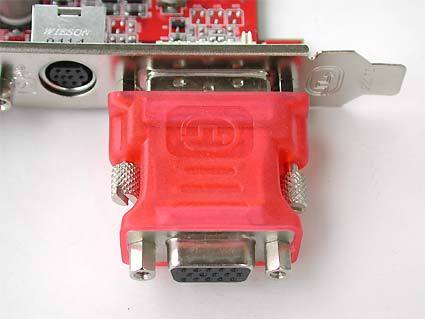THG Graphics Card Buyer's Guide
Monitor Connectivity
Almost every graphics card today features connectors for two monitors. Usually, cards will come with one DVI-I connector for a digital monitor and one standard VGA connector for CRTs. Adapters that ship with the card also allow for a second analog monitor to be used instead of a digital one. So, typically, the following combinations are possible: 1x VGA, 1x DVI, 2x VGA or 1x DVI & 1x VGA. If you're planning to hook up two digital (TFT) monitors to your card, you should look for cards with two DVI-I connectors; these are becoming more and more popular. Their flexibility allows for practically any combination of monitors.
If you intend to use more than two monitors, you will either have to buy a more expensive workstation card, or take a look at Matrox's selection of multi-head cards. ATI offers another alternative in the form of its IGP 9100 motherboard chipset sporting integrated graphics. Thanks to its SurroundView feature, the on-board graphics can remain active even when an add-in card is installed in the motherboard. As a result, up to three displays can be attached to one computer. However, for gaming purposes, simply hooking up several monitors to your system won't be enough. You can find a little guide here: Dual Display Gaming Bigs Up .
Another factor that is an unknown at present is the impact of PCI Express, or more precisely, motherboards with several x16 PEG slots. Several such chipsets have already been announced but have not yet been released by their respective manufacturers.
At present, only a few graphics cards come with two DVI(-I) monitor outputs, for connection with digital flat-panel monitors. A combination of 1x VGA and 1x DVI(-I) connectors is more common. Dual DVI-I is the more future-proof choice, even if you only attach analog monitors at present (using adapters - see next picture).
Using special adapters, analog monitors can be hooked up to DVI-I connectors. In most cases, a graphics card will ship with such an adapter.
Get Tom's Hardware's best news and in-depth reviews, straight to your inbox.

